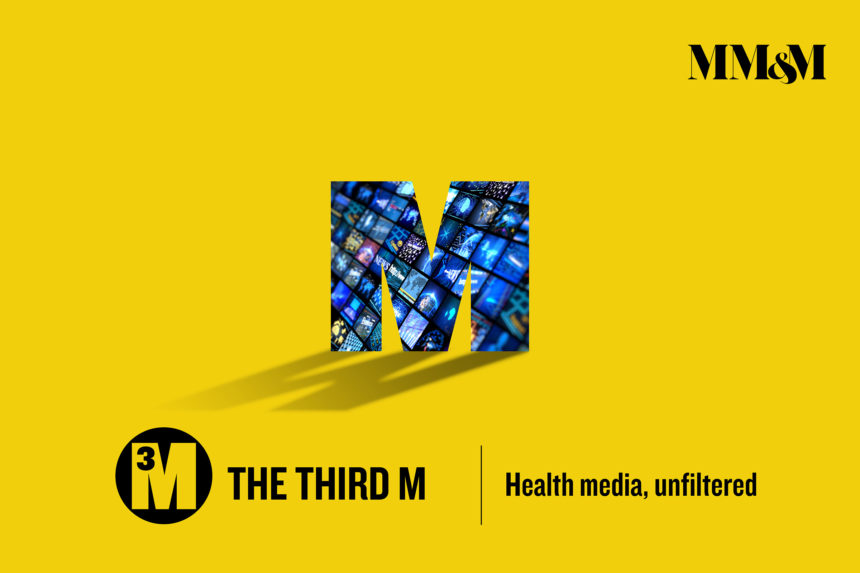When Nitika Chopra surveys the health media landscape, she doesn’t see herself reflected in the content mix, whether it’s marketing-related or otherwise. Initially diagnosed with psoriasis at age 10, Chopra has long preached the self-love and self-help gospels. But even as her career evolved – she went from the creator of online mag Bella Life to the host of Z Living talk show Naturally Beautiful, then landed a QVC gig as a skin-care spokesperson – she rarely referenced her own health struggles.
“To be honest, I wasn’t ready to talk about chronic conditions until recently,” she says. “But the thing I know the most about, and the thing I’m most passionate about, is talking to people with similar experiences around chronic illness.”
That changed in 2017, when Chopra partnered with Healthline Media to write and speak about her experiences with psoriasis and psoriatic arthritis. The relationship is about to expand significantly with the first Chronicon, a Healthline/Chopra event designed to shine a spotlight on a range of issues related to living with chronic illness. It’s scheduled for October 28 at Union Park Events in New York.
The event is a conscious response to what Chopra views as an underrepresentation of people with chronic illness in media. Speakers include a host of advocates and marketers including Stacy London, former What Not to Wear host and longtime psoriasis sufferer. The sponsor mix is heavy on high-end beauty, fashion and food brands, including Herla, Asha Patel Designs and Brodo, with Healthline as the lone pharma or healthcare backer.
“In a lot of ways, I feel like we’re introducing a new market to brands,” Chopra says.
To that end, she likens the way individuals with chronic illness are discussed and represented to the way plus-size people used to be covered. “There was a time when there were no plus-size or curvy women in any campaigns. Nobody talked about that whole different type of person,” she explains. “What you have now for chronic illness is some tokenism – maybe you’ll see one person with alopecia or vitiligo. We’re not part of the mix in a big way.”
The idea is, ‘Yeah, we have chronic illnesses, but we also love fashion. We’re getting PhDs. We’re mothers. We’re doing so many things that have nothing to do with chronic illness.’
Nitika Chopra
The main goal for Chronicon, then, is to push chronic illness further into those conversations. “Having your chronic illness become your identity is a very real problem,” Chopra says. “Psoriasis controls what I eat, when I take a shower, how I travel – it literally controls my day… We need to break the cycle of isolation.”
She hopes that Chronicon, which will be live-streamed, will help patients feel less alone and awaken marketers and media people alike to the plight of individuals dealing with chronic diseases. “The idea is, ‘Yeah, we have chronic illnesses, but we also love fashion. We’re getting PhDs. We’re mothers. We’re doing so many things that have nothing to do with chronic illness,’” Chopra explains.
Given the numbers shared by Chopra and Healthline – 133 million Americans live with chronic illness, which comprises 45% of the population – one wonders why marketers and, for that matter, event-planners haven’t made more pointed appeals to this market, splintered though it may be. Still, Chopra acknowledges some skepticism.
“There’s a mix of, ‘Oh my God, where has this been all my life? Why hasn’t this already happened?’ and ‘Wait, a whole event for chronic illness? Is that really necessary?’” Chopra says.
As for the Chronicon sessions themselves, Chopra has high hopes for Chronically Capable of Love. “It’s one of the questions I get asked about a lot: How do you date with a chronic illness?” she says. “Dating is challenging enough as it is. [Chronic illness] adds a whole extra layer to it.” Chopra also points to “Am I Sick Enough?,” with its emphasis on what she calls “invisible illness,” as a potential eye-opener for individuals unaware of everything that comes with living with a chronic condition.
“For something like psoriatic arthritis, you have pain but people can’t see it,” she notes. “That’s a real frustration for so many people.”








